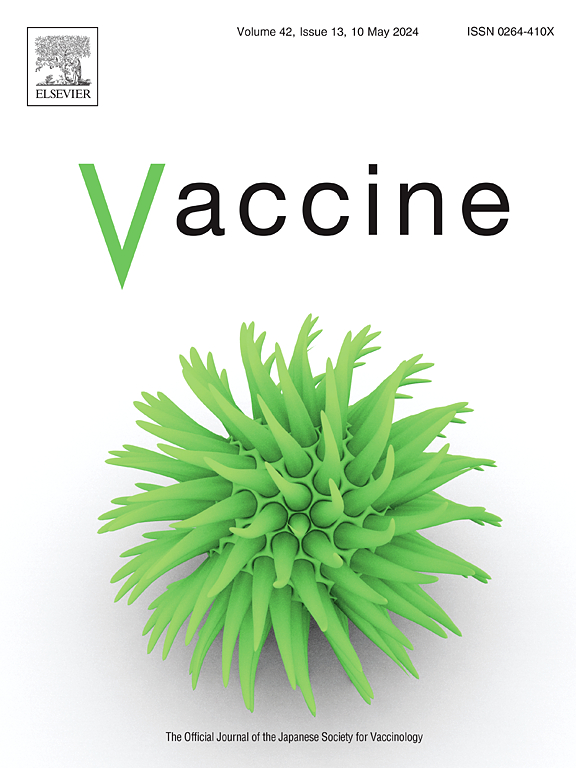Racial and ethnic differences among Mpox vaccination recipients by vaccination facility type in New York City—August–December 2022
IF 4.5
3区 医学
Q2 IMMUNOLOGY
引用次数: 0
Abstract
Objective
To evaluate if race and ethnicity were associated with mpox vaccination at routine care sites (i.e., existing healthcare facilities), compared with temporary sites (i.e., government-operated sites).
Methods
We analyzed data from New York City's (NYC's) Immunization Information System during August 8–December 14, 2022, the period when routine and temporary mpox vaccination sites were operational. We used generalized estimating equations to assess whether race and ethnicity were associated with vaccination facility type, adjusting for demographics and accounting for doses received.
Results
In NYC, 102,583 mpox vaccine doses were administered during August 8–December 14, 2022 (22.1 % at routine care sites and 77.9 % at temporary sites). Black non-Latino and Latino New Yorkers were 61 % and 34 % more likely, respectively, than White non-Latino New Yorkers to get vaccinated at routine care vs temporary sites (adjusted odds ratio [aOR] = 1.61; 95 % CI = 1.54–1.68; aOR = 1.34, 95 % CI = 1.29–1.39).
Conclusions
Although fewer persons were vaccinated at routine care sites, compared with temporary sites, routine care enhanced vaccine access for historically marginalized populations during NYC's 2022 mpox outbreak.
2022年8月至12月,纽约市按疫苗接种机构类型划分的麻疹疫苗接种者的种族和民族差异
目的评价常规护理点(即现有卫生保健设施)与临时护理点(即政府运营的地点)的m痘疫苗接种是否与种族和民族相关。方法分析2022年8月8日至12月14日期间纽约市免疫信息系统(NYC’s Immunization Information System)的数据,这段时间为常规和临时m痘疫苗接种点运行期间。我们使用广义估计方程来评估种族和民族是否与疫苗接种设施类型相关,调整人口统计数据并考虑接受的剂量。结果纽约市在2022年8月8日至12月14日期间接种了102,583剂m痘疫苗(22.1%在常规护理点,77.9%在临时护理点)。非拉丁裔黑人和拉丁裔纽约人分别比非拉丁裔白人纽约人在常规护理处和临时地点接种疫苗的可能性高61%和34%(调整后的优势比[aOR] = 1.61;95% ci = 1.54-1.68;aOR = 1.34, 95% CI = 1.29-1.39)。结论:尽管与临时接种点相比,常规护理点接种疫苗的人数较少,但在纽约市2022年mpox暴发期间,常规护理提高了历史上边缘化人群获得疫苗的机会。
本文章由计算机程序翻译,如有差异,请以英文原文为准。
求助全文
约1分钟内获得全文
求助全文
来源期刊

Vaccine
医学-免疫学
CiteScore
8.70
自引率
5.50%
发文量
992
审稿时长
131 days
期刊介绍:
Vaccine is unique in publishing the highest quality science across all disciplines relevant to the field of vaccinology - all original article submissions across basic and clinical research, vaccine manufacturing, history, public policy, behavioral science and ethics, social sciences, safety, and many other related areas are welcomed. The submission categories as given in the Guide for Authors indicate where we receive the most papers. Papers outside these major areas are also welcome and authors are encouraged to contact us with specific questions.
 求助内容:
求助内容: 应助结果提醒方式:
应助结果提醒方式:


